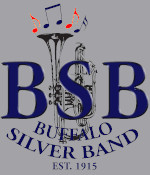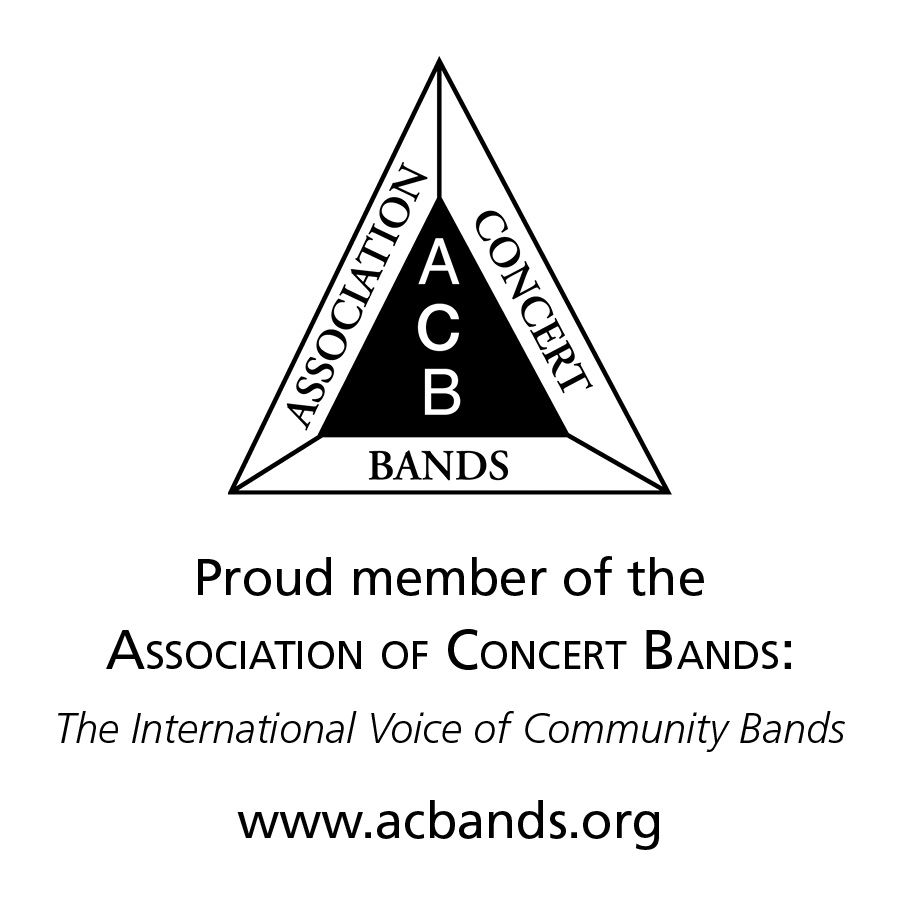Our 100-year history is a story not only of the band reaching out to communities in Western New York and Ontario, but of the community reaching out to the band. Our story actually begins in 1909 when the First German Baptist Church on Spruce Street in Buffalo reached out to Hungarian immigrants and helped them establish a meeting place so they could worship as a group. Not long after, Susan Reid, a member of the congregation, provided funds to construct a more traditional worship place on Austin Street, which gave birth to the First Hungarian Baptist Church in 1912.
Soon after the church was founded, a few musicians among the congregation offered their services, playing hymns and other works of a religious nature, and began adding instrumentalists willing to join the group. By 1915 the group had grown to 11-15 members – a large enough group to be called a band. They purchased a bass drum for the ensemble and designated it with the title, “First Hungarian Baptist Church Band.”

The little church grew in both membership and diversity. In order to be more inclusive and reflect the diversity of the congregation, the church renamed itself the Austin Street Baptist Church in 1955. Accordingly, the band changed its name as well.
The distinctive sound of the current Buffalo Silver Band is a result of a fairly standard instrumentation for British-style brass (silver) bands: 10 cornets, a flugelhorn, 3 tenor horns, 2 baritones, 2 euphoniums, 3 trombones, 4 basses, and 2-4 percussionists. Most brass bands today have instrumentation close to this assortment. Note that tenor horns are used rather than French horns, while cornets replace trumpets, and no reed instruments are part of a strictly British style brass band.
It is unlikely the band had this instrumentation until the 1960s, when the instrumentation had changed enough to allow the band to rename itself the Buffalo Baptist Silver Band. A photo from this period revealed 26 members with instrumentation like that of British style brass bands.
A final and significant name change took place in 1981. By the late 1970s the band had opened its membership to include musicians of all faiths, and the baptist label no longer seemed appropriate for the name of the band. The name was changed officially to The Buffalo Silver Band in 1981, although even before that, it was referred to by its new name. The change was significant because it meant that the band was now a community band and no longer a church band. Due to this change, the growing size of the band and the space needed to store music and percussion instruments, the band has relied on the generous hospitality of several institutions around Western New York which furnished a home for the band to hold weekly practice sessions. They include the Anglican Church of West Seneca (our current practice location), Buffalo State College, Church of the Ascension (Buffalo), Transit Middle school, and Mill Middle school.

Many challenges arise over 100 years. For the band, one period was, understandably, during WW ll. Another occurred in the late 1980s and early 1990s. When the band celebrated its 65th anniversary in 1980 it had 34 members and had a library of over 2000 pieces. All support for the band (music, program costs, instruments, etc.) came from donations the members made weekly. In 1990, “The Brass Band Bridge,” a journal for brass band news, remarked that they had “heard stories of the demise of the Buffalo Silver Band.” During the late 1980s and early 1990s a number of things occurred which might have fueled these false stories. Conductor Michael Russo took a leave of absence to attend graduate school, three players decided to stop commuting from Bradford, PA for rehearsals (!), another member was lost to cancer, the music library was sold, and the recruitment of new, younger members was frustrating and difficult because of their comfort playing other instruments such as trumpet and french horn and lack of experience playing brass band music.

But “the band played on” thanks to many dedicated individuals. They include band leaders such as Nelson Starr, who was not only a leader musically, but donated a number of pieces to update the band’s music library, and John Vizanski who was band president and promoter for many years. Our list of distinguished conductors includes Ernest G. Barton, George Beke, William Cocca, Rick Fleming, Fred Jobson, John Landers, Pim Liebmann, James Malby III, Wendy Metz, Fred Nagy, Michael Russo, and William Weikert.
According to the bylaws the band has adopted, conductors and members are not allowed to benefit financially from their involvement in the band. Rather, our mission is to foster, among the community at large, a “taste and love” for brass band music. This simple mission makes possible stories like the following, as recounted by one of our band members.
“My neighbor is an activity director at a senior residence. My wife suggested that she contact the band for a possible concert. She didn’t think this was possible. She had previously contacted a small ensemble but couldn’t manage the price the musicians were asking, so she assumed a band of 25 musicians would be out of the question. I told her the Buffalo Silver Band was different and to contact the band president anyway. Not long after, the band was playing a concert at the facility. After the concert, the activity director’s husband came up to me and said, ‘That was great! Did you see their faces while you were playing? They were beaming!’ ”
The band has been asked to return for a concert next year. Mission accomplished.
Some important dates and memories for the Buffalo Silver Band
1980 The Buffalo Silver Band celebrated its 65th anniversary. By this time the band had won first place four times in brass band competitions. The band president reported that the band had a library of over 2000 pieces. In the early 1990s the library was sold to a brass band in Arizona. It was replaced with newer brass band music, including several arrangements composed by a member of the band.
1990 The Brass Band News referred to the Buffalo Silver Band as “one of the great British brass bands of North America, “a somewhat nicer description than a “non-parading outfit” as stated in a local suburban newspaper!
1994 The bass drum from the 1915 band (then known as the First Hungarian Baptist Church Band) was donated to the Buffalo History Museum, where it is currently on display.
1995 Awarded “Champion Band” title in the “Challenge Section” of the North American Brass Band Championships
2011 The band gets plenty of competition at a summer concert as a thunderstorm pounds heavy rain on the metal roof of the Brighton Arena.
2013 Concert at the Chautauqua Institution Amphitheater (our largest audience of about 1,100).
2014 The band wins the Hannaford Cup at the Festival of Brass in Toronto, performing the competition piece The Vanished Army, by K.J. Alfford.
2015 To celebrate its 100th season, the Buffalo Silver Band commissions an original work by Stephen Bulla.


